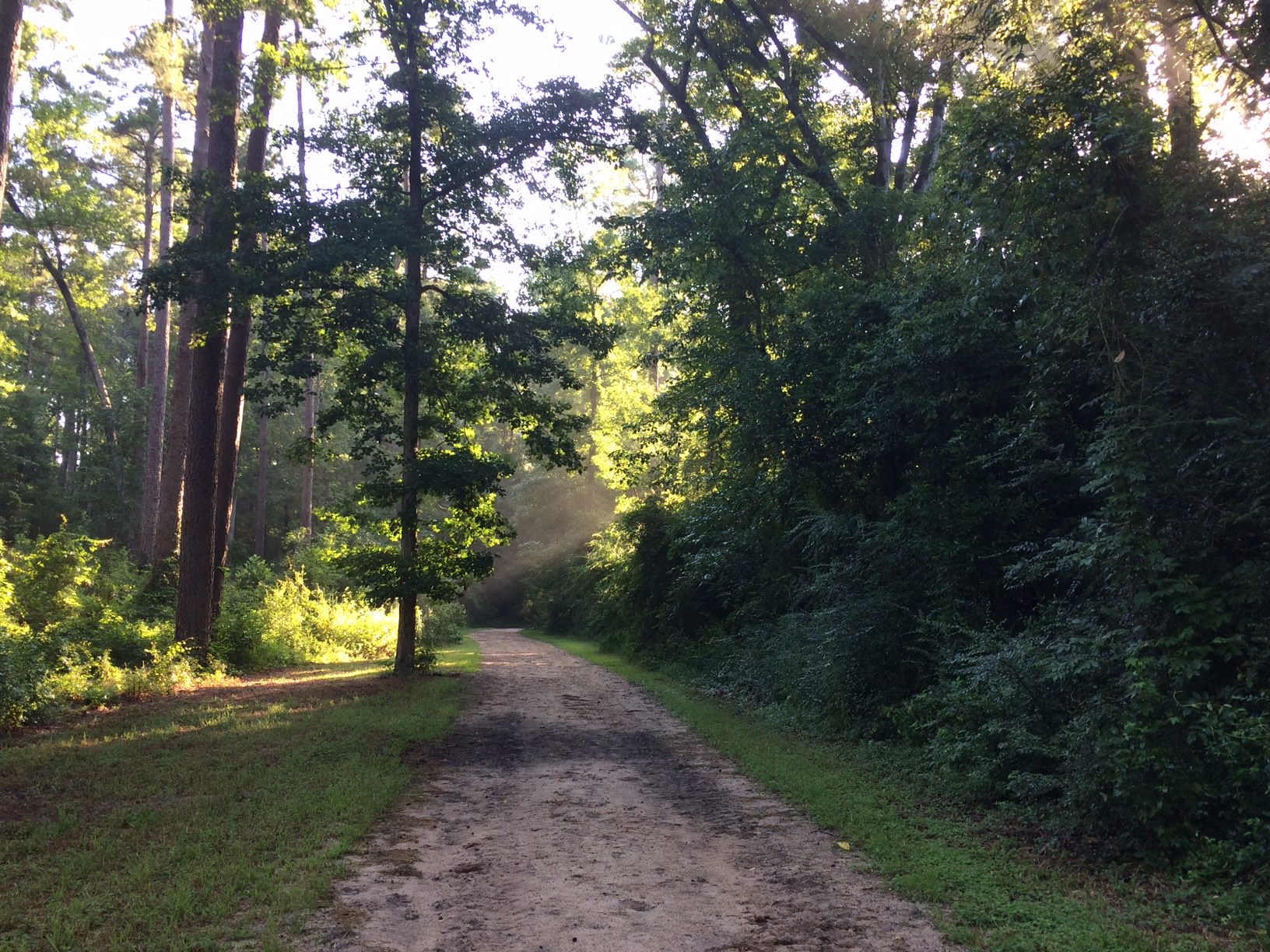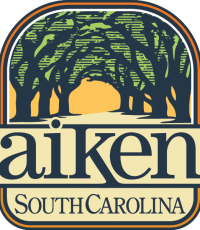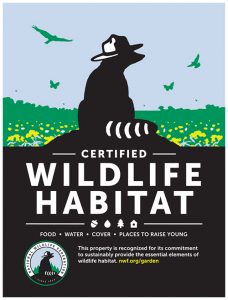Benefits of a Forest…like Hitchcock Woods
Did you know that urban forests, like Hitchcock Woods, are good for the environment, our community and good for you too? Here’s how:
- Trees add beauty and improve personal health
- Trees reduce air pollution
- Trees fight the atmospheric greenhouse effect
- Trees conserve water and reduce soil erosion
- Trees save energy
- Trees modify local climate
- Trees increase economic stability
- Trees reduce noise pollution
- Trees create wildlife and plant diversity
- Trees increase property values

Trees Add Beauty and Improve Personal Health
Trees are major capital assets in America’s cities and towns. Just as streets, sidewalks, sewers, public buildings and recreational facilities are a part of a community’s infrastructure, so are publicly owned trees. Trees – and, collectively, the urban forest – are important assets that require care and maintenance the same as other public property. Trees are on the job 24 hours every day working for all of us to improve our environment and quality of life. Without trees, the city is a sterile landscape of concrete, brick, steel and asphalt. Picture your town without trees. Would it be a place where you would like to live? Trees make communities livable for people.
Trees add beauty and create an environment beneficial to our mental health. Trees:
- Add natural character to our cities and towns.
- Provide us with colors, flowers, and beautiful shapes, forms and textures.
- Screen harsh scenery.
- Soften the outline of masonry, metal, and glass.
- Can be used architecturally to provide space definition and landscape continuity.
Trees impact deeply on our moods and emotions, providing psychological benefits impossible to measure. A healthy forest growing in places where people live and work is an essential element of the health of the people themselves. Trees:
- Create feelings of relaxation and well-being.
- Provide privacy and a sense of solitude and security.
- Shorten post-operative hospital stays when patients are placed in rooms with a view of trees and open spaces.
A well managed urban forest contributes to a sense of community pride and ownership.
Trees Reduce Air Pollution
- Trees and other plants make their own food from carbon dioxide (CO2) in the atmosphere, water, sunlight and a small amount of soil elements. In the process, they release oxygen (02) for us to breathe. Trees:
- Help to settle out, trap and hold particulate pollutants (dust, ash, pollen and smoke) that can damage human lungs.
- Absorb CO2 and other dangerous gases and, in turn, replenish the atmosphere with oxygen.
- Produce enough oxygen on each acre for 18 people every day.
- Absorb enough CO, on each acre, over a year’s time, to equal the amount you produce when you drive your car 26,000 miles.
Trees remove gaseous pollutants by absorbing them through the pores in the leaf surface. Particulates are trapped and filtered by leaves, stems and twigs, and washed to the ground by rainfall.
Air pollutants injure trees by damaging their foliage and impairing the process of photosynthesis (food making). They also weaken trees making them more susceptible to other health problems such as insects and diseases.
The loss of trees in our urban areas not only intensifies the urban “heat island” effect from loss of shade and evaporation, but we lose a principal absorber of carbon dioxide and trapper of other air pollutants as well.
Trees Fight the Atmospheric Greenhouse Effect
Heat from Earth is trapped in the atmosphere due to high levels of CO2 and other heat trapping gases which prohibit it from releasing heat into space – creating a phenomenon known as the “greenhouse effect.”
The greenhouse effect is created when heat from the sun enters the atmosphere and is prevented from radiating back into space by air polluting gases. The buildup of about 40 heat trapping gases is created mostly by human activities. Heat buildup threatens to raise global temperatures to levels unprecedented in human history. About half of the greenhouse effect is caused by CO2.
Trees act as a carbon sink by removing the carbon from CO2 and storing it as cellulose in the trunk while releasing the oxygen back into the air. A healthy tree stores about 13 pounds of carbon annually – or 2.6 tons per acre each year.
Trees also reduce the greenhouse effect by shading our homes and office buildings. This reduces air conditioning needs up to 30%, thereby reducing the amount of fossil fuels burned to produce electricity.
This combination of CO2 removal from the atmosphere, carbon storage in wood, and the cooling effect makes trees a very efficient tool in fighting the greenhouse effect.
Trees Conserve Water and Reduce Soil Erosion
Trees create organic matter on the soil surface from their leaf litter. Their roots increase soil permeability. This results in:
- Reduced surface runoff of water from storms.
- Reduced soil erosion and sedimentation of streams.
- Increased ground water recharge that is significantly reduced by paving
- Lesser amounts of chemicals transported to streams.
- Reduced wind erosion of soil.
Without trees, cities would need to increase sewage and stormwater drainage channels and waste treatment capacities to handle increased water runoff.
Trees Save Energy
Strategically placed trees can be as effective as other energy saving home improvements, such as insulation and the installation of weather tight windows and doors. Trees can help reduce your heating and cooling costs.
Trees save energy through cooling in the hotter months. They provide a windbreak during winter. This results in burning less fossil fuel to generate electricity for cooling and heating.
Strategically placed shade trees – a minimum of three large trees around your home – can reduce air conditioning costs up to 30%. Shade trees offer their best benefits when you:
- Plant deciduous trees, which shed their leaves during winter. These trees provide shade and block heat from the sun during hotter months. By dropping their leaves in the fall, they admit sunlight in the colder months.
- Place these trees on the south and west sides of buildings.
- Shade all hard surfaces such as driveways, patios, and sidewalks to minimize landscape heat load.
Use evergreens, which retain their leaves/needles year long, in a planned pattern. They will serve as windbreaks to save from 10 to 50% in energy used for heating. Evergreens offer their best benefits when you:
- Place them to intercept and slow winter winds, usually on the north side of your home.
- Do not plant them on the south or west sides of your home, because they block warming sunlight during winter. These trees also provide some shading benefits during summer.
Get professional assistance to assure correct selection of species and their placement to maximize energy savings.
Trees Modify Local Climate
Trees can help cool the “heat island” effect in our inner cities. These islands result from storage of thermal energy in concrete, steel, and asphalt. Heat islands are 3 to 10 degrees warmer than the surrounding countryside. The collective effect of a large area of transpiring trees (evaporating water) reduces the air temperature in these areas. Trees also:
- Lower air temperature through shade.
- Increase humidity in dry climates through evaporation of moisture.
- Reduce glare on sunny days.
- Reduce wind speed.
Trees Increase Economic Stability
The scope and condition of a community’s trees and, collectively, its urban forest, is usually the first impression a community projects to its visitors. Studies have shown that:
- Trees enhance community economic stability by attracting businesses and tourists.
- People linger and shop longer along tree lined streets.
- Apartments and offices in wooded areas rent more quickly, have higher occupancy rates, and tenants stay longer.
- Businesses leasing office space in wooded developments find their workers are more productive and absenteeism is reduced.
A community’s urban forest is an extension of its pride and community spirit.
Trees Reduce Noise Pollution
Trees absorb and block noise from the urban environment.
Trees Create Wildlife and Plant Diversity
Trees and associated plants create local ecosystems that provide habitat and food for birds and animals. They offer suitable mini-climates for other plants that would otherwise be absent from urban areas. Biodiversity is an important part of urban forestry.
Trees Increase Property Values
We all know that property that is well landscaped with trees and other plants is more desirable than property sitting on a barren landscape. Studies have shown that:
- Healthy trees can add up to 15% to residential property value.
- Office and industrial space in a wooded setting is in more demand and is more valuable to sell or rent.
Source: South Carolina Forestry Commission (http://www.state.sc.us/forest/urbben.htm)
Did you know that spending time in Hitchcock Woods is not only fun but good for you too! Check out the following articles to learn how:
- Immerse Yourself in a Forest for Better Health
- How Walking in the Woods Benefits Your Health
- Health and Wellness Benefits of Spending Time in Nature
- 11 Reasons You Should be Spending More Time Outside
- 7 Benefits of Spending Time In Nature
- This is your Brain on Nature
- The Claim: Exposure to Plans and Parks Can Boost Your Immunity
- 12 Science-Backed Reasons You Should Spend More Time Outside
- Benefits for Children of Time Spent in Nature
- The Real Benefits of Nature Play Everday





